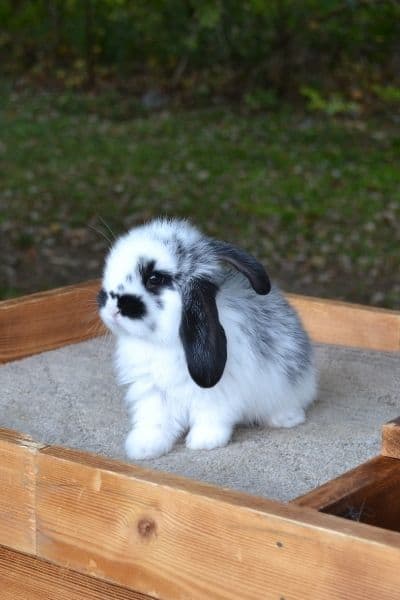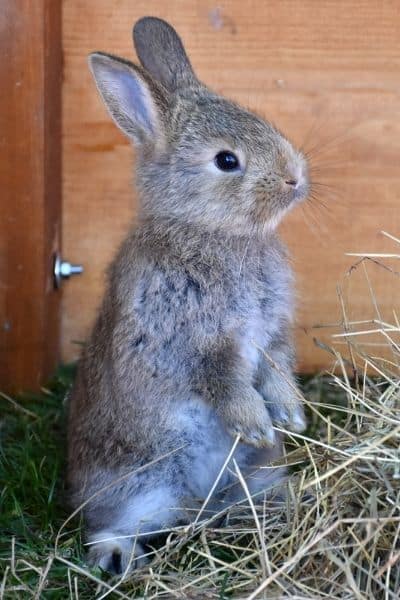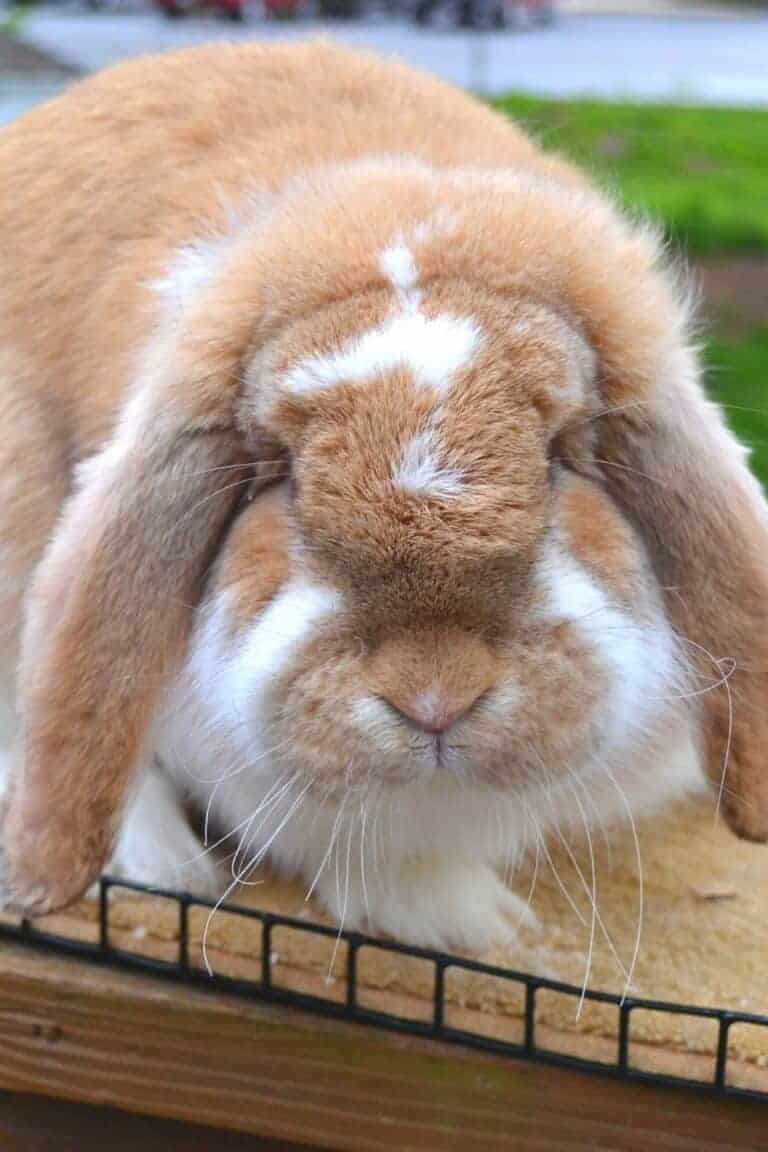Rabbit Conformation – How To Choose Jr Rabbits
Rabbit conformation is something that can feel like a mystery. Never mind trying to decide which babies to keep out of your litter.
It’s easy to be sucked in by color or a cute face that looked at you juuussssttttt the right way.
When you have a nest full of little ones try to keep your emotions out of the decision-making as much as possible. – I know I know, easier said than done. But you will end up with a much better herd because of it.
Let’s get into how to learn your breed’s conformation and deciding which rabbits to keep to grow your herd for the better.
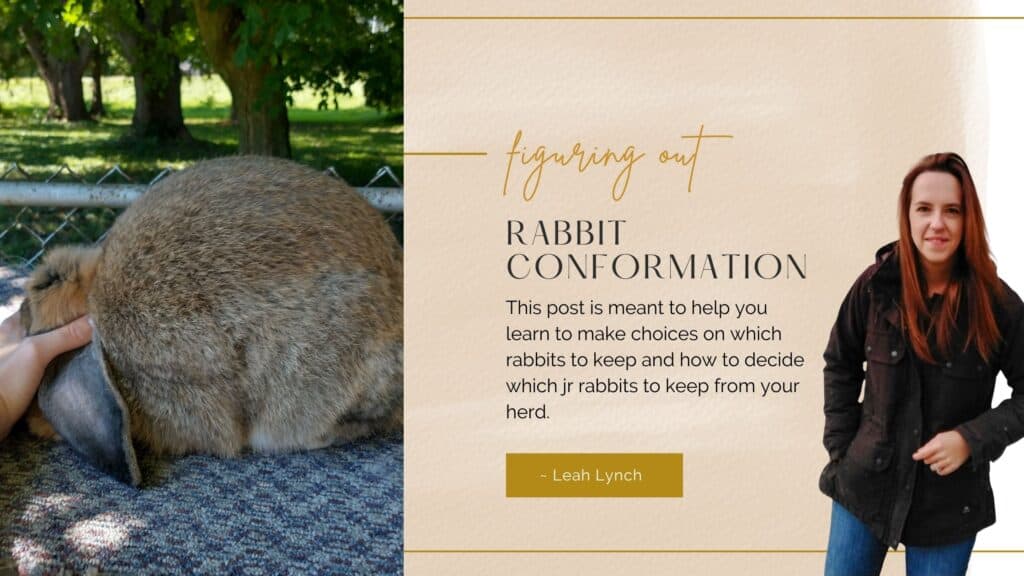
Study Your Rabbits & Become An Observer To Learn Conformation
All of the rabbits in this post are french lops and are posed according to the Comershal style body type.
I want you to become an observer. Study your rabbits and learn what will turn into something beautiful as an adult. If you have space, keep a few cages open for you to keep a few babies every so often. I keep 3 cages empty for “grow” cages so I can keep jr’s that catch my eye to see if they turn into something I want to keep.
If you can do this take advantage of it. Get them out every week or so and start posing them. See how they grow and mature. Use them to learn.
Watch others at the show. See how they pose a rabbit. What are they doing? What do they seem to be focusing on when posing their animals.
Listen to the judges. What are they saying about each animal as they pose it and give feed back on each animal.

You Will Never Find The “Perfect” Conformation In A Rabbit
The perfect rabbit doesn’t exist. So don’t put stress on yourself to find the perfect one. Just do your best and keep the one that comes the closest. It’s all part of the game is seeing how good you can make your animals.
My heart is so happy when I finally get a rabbit that doesn’t get any bad comments from a judge at a show.

Don’t Keep A Rabbit For “Just One” Good Conformation Feature
Now I want to touch on something that has more to do with breeding but I could also affect which rabbits you keep so you kneed to know this.
Somehow people have this idea what if you breed one rabbit that has good shoulders and poor hindquarters. To a rabbit who has poor shoulders and good hindquarters that some how the genes will magically counteract each other and make good type for the babies.
Hu? How on earth does that work?
You know the saying two wrongs don’t make a right? It’s the same with rabbit type. Breeding two rabbits together that have complementary good and bad features will not make good babies.

So I say all that to say this.
If a rabbit has one good feature that you feel your rabbit herd needs to improve on. But it is poor in other areas.
DON’T KEEP IT.
You will breed its bad qualities into your herd along with the bad. Make sense?
Rabbit Posing Quick Tips
The latest on Youtube:
Posing a rabbit to look at its conformation is not easy. If the rabbits are not cooperating try again the next day or in a few hours. Some days they just don’t want to sit like they should. So don’t stress yourself or them.
6-8 weeks is when they finally start to get the idea of posing.
Don’t bother trying to pose and look at them for good confirmation right after you fed them. They will be grumpy because they want to keep eating but they also get a little bit of a belly right after eating so that will distort their appearance.
Try before you feed or wait for a few hours. They are pretty fussy and can be little boogers right after eating.
Know The Main Judging Factors Of Your Breed Conformation
If your breed is recognized by the ARBA (American rabbit breeders association) there is a point system that they are judged by which you can find in the Standard Of Perfection. This will help you have a “priority” list when it comes to choosing which babies to keep or at least raise to an older age to see how they turn out.
“First look” at the jr rabbit conformation – 4 to 5 weeks
The first age I like to look at babies is about 4 to 5 weeks old. They are just starting to take shape. The main thing I look at is the topline and spinal curve. That is something that won’t change as they grow.

If there is something off about it at this young age I have found that it’s not going to get better the older they get. This is the first round of “Eliminations” as it were.
Also, look at the width corresponding to the length of the rabbit. This is the small window where you will be able to see how they will look. This is another key factor in breeds like the french lop or commercial body type when mass is a key factor.
The third thing I look at is the skull and head shape. Once they get past this age it is going to start looking more narrow then it should as an adult simply because they are growing. So if you see one with a nice head make note of that but don’t let it be the deciding factor.
This little guy stood out to me in the litter from the beginning. It is not all the time that they turn out just as good as they were in the next box but about 75% of the time they are going to hold true to their shape. Remember that I said long shoulders are something that tends to come in late so keep that in mind.
A second look at the jr rabbits’ conformation – 6-8 weeks
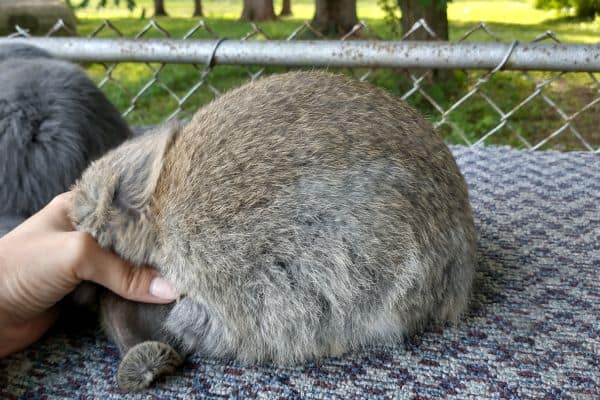
Before you make a call this is the age where they start to look slender and don’t have much body mass. They are kind of like the skinny teenager who has not filled out yet.
At this age, you are just looking to see if there are any changes in the length of body shape and shoulders. Are they lengthening to where they are longer than they should be?
(if you raise a breed like Flemish Giants or English lops this does not apply) The ARBA has a great PDF to help you know what conformation pose your breed should have.
My Rabbitry Must Haves
14 weeks
Keep in mind that the age brackets I choose to look at rabbits to decide if I want to keep them are based on french lops. They are a much slower growing breed and can grow up to 14 months old. Granted it is not much after about 8-12 months old but they still get stalkier and sometimes change shape.
With that said. 14weeks is the next age group I personally like to look over the rabbits I decided to keep. They should be starting to look like that 4-5 week old body type again and filling out a bit better.
Just Keep Watching Them
It’s a project and a half to keep taking pictures of rabbits for almost a year. But this is a chestnut doe I picked up around 6-8 weeks old. She turned out to be an amazing doe and proved my strategy works. — Keep in mind that the older a rabbit gets the better they get at posing. So this will help with their conformation.
Chestnut Doe At 6-8 Weeks

Same doe around 4 months

Same doe full grown

When it comes to looking at which Jrs to keep and learning how they develop is simply doing it A LOT. Watch for patterns you see and trust your gut. I have one doe that looked beautiful as a jr and was an ugly duckling for MONTHS. She is finally over a year and looking much better. Sometimes it takes a while for all the pieces to come together.
This is the doe pictured in the previous section at almost 7 months old. She is not putting quite enough weight on her front feet so she is pulling back a bit but she is looking really nice even still.
